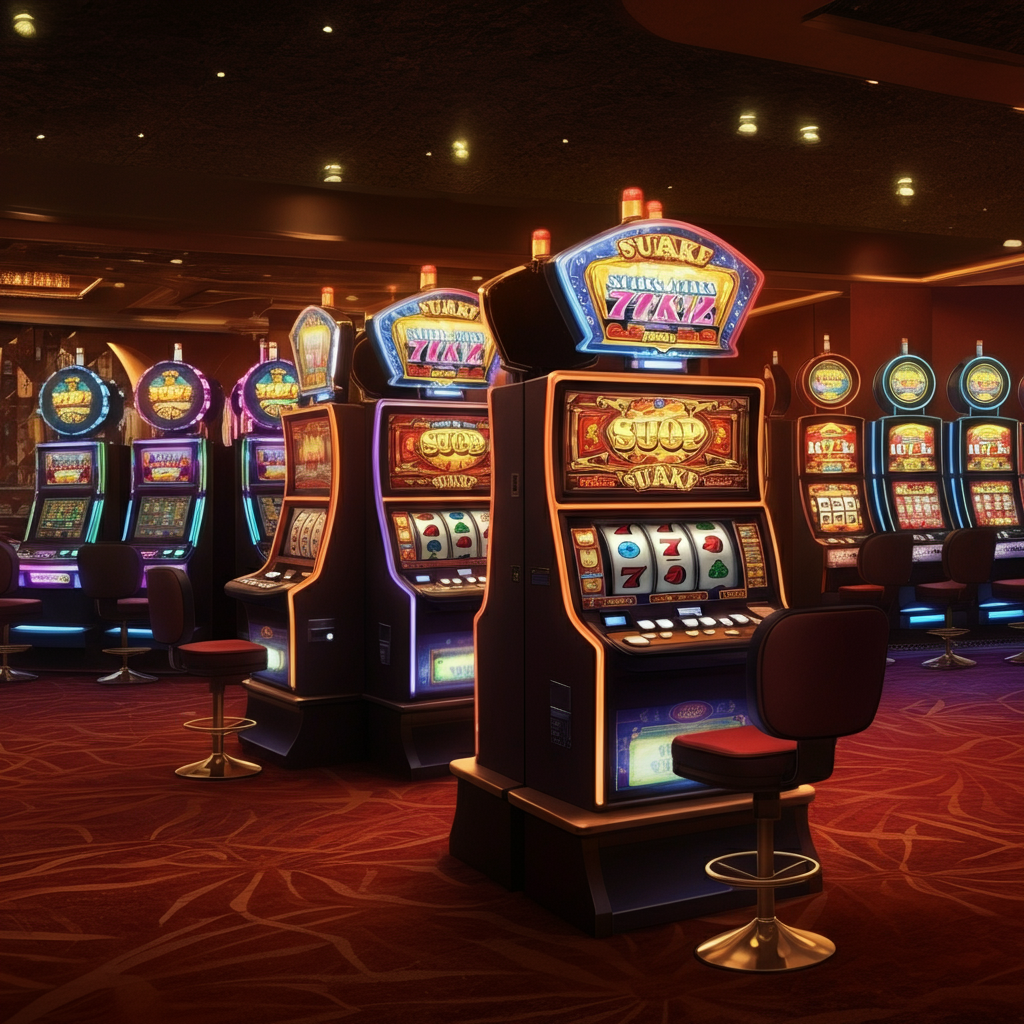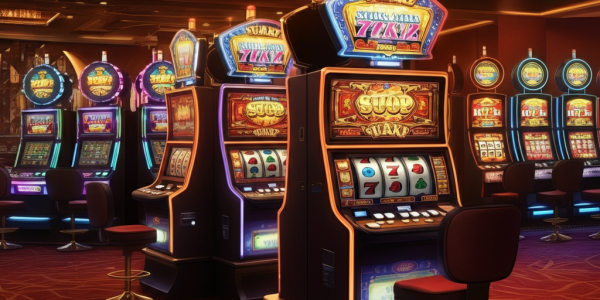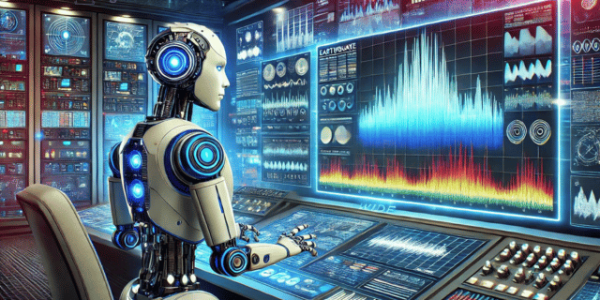Rahasia Slot Online Maxwin: Menang Maksimal dengan Fitur Terbaik dan RTP Tinggi
Game Slot udah jadi permainan paling banyak di mainin pada dunia perjudian online atau offlane. Dengan berbagai tema menarik dan peluang menang yang besar, tidak mengherankan jika banyak pemain mencari cara untuk mendapatkan kemenangan maksimal. Salah satu cara untuk mencapai…
Hal yang Dilakukan Menjaga Bankroll Situs Slot Online Terbaik
Bermain di situs slot online terbaik bisa menjadi pengalaman yang sangat mengasyikkan. Selain memberikan hiburan, game slot online juga menawarkan kesempatan untuk meraih kemenangan besar. Namun, meskipun tampaknya mudah dan menyenangkan, banyak pemain yang gagal meraih keuntungan jangka panjang karena…
Game Online Yang Membawa Keberuntungan Dan Kemenangan Super Besar
Saat ini, game online tidak hanya menjadi hiburan semata, tetapi juga memberikan kesempatan luar biasa bagi para pemain untuk meraih keberuntungan dan kemenangan besar. Banyak orang telah mengenalinya sebagai cara baru untuk mengisi waktu luang sekaligus mendapatkan keuntungan nyata. Namun,…
Keajaiban Slot Jepang: Menang Besar di Dunia Tradisi
Mesin slot telah lama menjadi salah satu permainan paling populer di dunia judi, tetapi di Jepang, keunikan dan daya tarik slot mengambil dimensi yang sama sekali berbeda. Memadukan teknologi canggih, estetika yang memukau, dan elemen tradisional yang kental, slot Jepang…
Penyedia Informasi Situs Judi Slot Gacor Terlengkap Di Indonesia
Dalam dunia perjudian online, khususnya di Indonesia, popularitas slot online terus meningkat. Banyak pemain mencari situs yang dapat dipercaya dan menawarkan pengalaman bermain yang optimal. Di sinilah pentingnya keberadaan penyedia informasi situs judi slot gacor terlengkap di Indonesia. Artikel ini…
Main di Slot Gacor Itu Kayak Dapat Hoki Tiap Hari! Coba Deh!
Siapa yang tidak senang saat keberuntungan berpihak kepada kita, terutama dalam permainan slot? Bagi para penggemar game slot, bermain di “slot gacor” bagaikan menemukan tambang emas yang penuh dengan kejutan keberuntungan. Tapi, apa sebenarnya slot gacor, dan bagaimana cara memanfaatkan…
Absolution: Film Aksi Penuh Ketegangan Siap Tayang pada 2 November 2024
Pada 2 November 2024, dunia perfilman akan kedatangan sebuah karya yang dijanjikan akan memikat para penggemar film aksi dan thriller: Absolution. Film ini bukan hanya menawarkan adegan laga yang mendebarkan, tetapi juga berpotensi mengeksplorasi kedalaman karakter dan intrik misterius yang…
Pentingnya Fashion Forecaster Dalam Trend Fashion
Dalam dunia fashion yang selalu berubah, peran fashion forecaster menjadi semakin penting. Mereka adalah para profesional yang memprediksi arah tren fashion di masa depan, memberikan wawasan yang berharga bagi desainer, merek, dan industri secara keseluruhan. Artikel bestregarts.com akan membahas apa…
Pengaruh Dunia Digital dalam Membentuk Pola Hidup
Dalam beberapa dekade terakhir, dunia digital telah mengubah hampir setiap aspek kehidupan manusia. Dari cara kita berkomunikasi, bekerja, hingga berinteraksi dengan lingkungan sekitar, digitalisasi telah membawa dampak yang signifikan. Pengaruh dunia digital tidak hanya terbatas pada kemudahan akses informasi, tetapi…
Dubai: Permata Timur Tengah yang Menawarkan Keindahan Tak Terduga
Dubai, sebuah kota yang terletak di Uni Emirat Arab, sering kali dikenal sebagai pusat kemewahan dan modernitas. Namun, di balik kilauan gedung pencakar langit dan resor mewah, terdapat keindahan yang tak terduga, mulai dari tradisi budaya yang kaya hingga lanskap…
Erling Haaland: Profil Striker Muda Paling Mematikan di Eropa
Dalam dunia sepak bola Eropa, nama Erling Haaland telah menjadi sensasi yang tak terbantahkan. Disebut-sebut sebagai salah satu striker muda paling mematikan, Haaland telah menarik perhatian banyak penggemar sepak bola dan pakar olahraga. Artikel ini akan mengupas tuntas tentang siapa…
Labuan Bajo: Tempat Ideal untuk Merayakan Tahun Baru
Tahun Baru adalah momen spesial yang dinanti-nanti oleh banyak orang. Biasanya, orang-orang mencari tempat yang menarik untuk merayakan pergantian tahun dengan penuh kebahagiaan. Salah satu destinasi yang semakin populer untuk merayakan Tahun Baru adalah Labuan Bajo, sebuah kota kecil yang…























